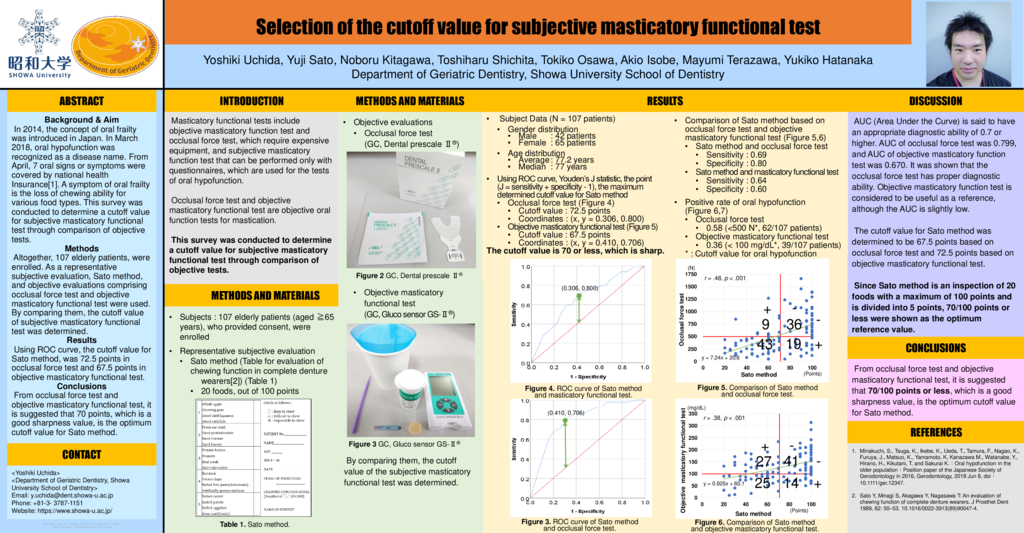Background & Aim: In 2014, the concept of oral frailty was introduced in Japan, showing that maintenance of oral functions is important to prevent physical frailty. In March 2018, oral hypofunction was recognized as a disease name. From April, 7 oral signs or symptoms (oral uncleanness, oral dryness, decline in occlusal force, decline in motor function of tongue and lips, decline in tongue pressure, decline in chewing function, and decline in swallowing function) were covered by insurance, and interest in oral function increased. A symptom of oral frailty is the loss of chewing ability for various food types. The occlusal force test and objective masticatory functional test are objective oral function tests for mastication. This survey was conducted to determine a cutoff value for the subjective masticatory functional test through comparison of the objective tests. Methods: Altogether, 107 elderly patients (aged ≧65 years), who provided consent, were enrolled. As a representative subjective evaluation, the Sato method (table for evaluation of chewing function in complete denture wearers), and objective evaluations comprising the occlusal force test (GC, Dental prescale Ⅱ○R) and the objective masticatory functional test (GC, Gluco sensor GS-Ⅱ○R) were used. By comparing them, the cutoff value of the subjective masticatory functional test was determined. Results: Based on the reference value of oral hypofunction, the positive rate of the occlusal force test was 58% (<500 N, 62/107 patients), and the objective masticatory functional test was 36% (< 100 mg/dL,39/107 patients). Using Youden’s J statistic, the point (J = sensitivity + specificity -1), the maximum determined cutoff value for the Sato method, was 72.5 points in the occlusal force test and 67.5 points in the objective masticatory functional test. Conclusions: The cutoff value for the subjective masticatory functional test was determined to be 67.5 points based on the occlusal force test and 72.5 points based on the objective masticatory functional test. From both tests, it is suggested that 70 points, which is a good sharpness value, is the optimum cutoff value for the Sato method.
- 60 views



